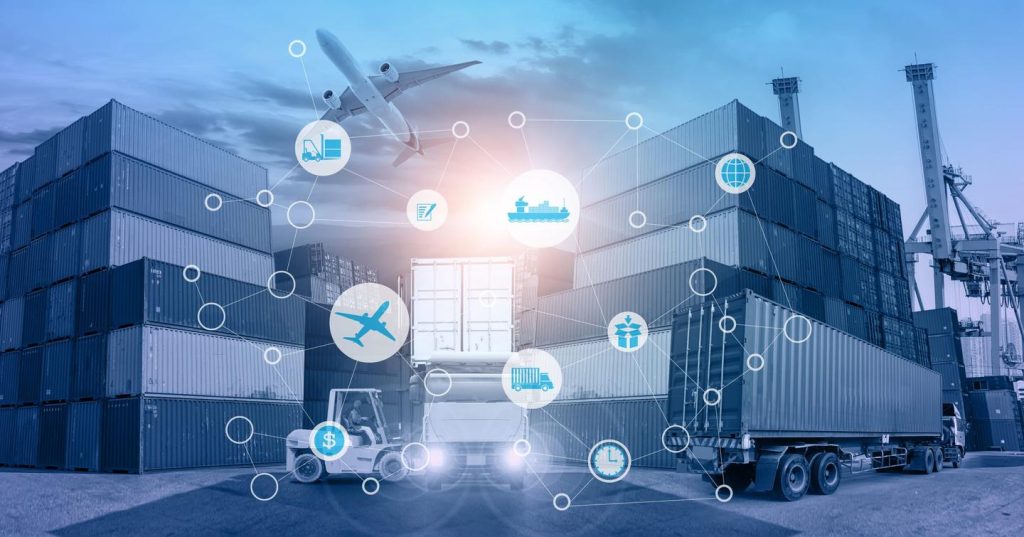Introduction
In today’s increasingly globalized economy, supply chains are becoming more complex, spanning across continents, involving numerous intermediaries, and handling vast amounts of data. This complexity often leads to challenges such as inefficiencies, lack of transparency, fraud, and errors in tracking goods. In response to these issues, blockchain technology has emerged as a powerful tool to streamline supply chain operations.
Blockchain, with its decentralized, transparent, and immutable nature, offers significant potential for transforming the way supply chains operate. By providing a secure and transparent way to track goods and transactions, blockchain can enhance the efficiency, traceability, and security of supply chains across various industries.
In this article, we will explore the advantages of blockchain technology in supply chain management, and how it can address traditional challenges while driving innovation in the industry.
What is Blockchain Technology?
At its core, blockchain is a distributed ledger that records transactions across many computers in such a way that the registered transactions cannot be altered retroactively. This ensures that the information recorded is transparent, secure, and immutable. Blockchain operates on a decentralized network, where each participant (node) has access to the same data, and transactions are verified through a consensus mechanism.
For supply chains, blockchain can provide an immutable record of transactions, allowing businesses to track the movement of goods, verify the authenticity of products, and ensure compliance with standards in real-time.
Key Advantages of Blockchain Technology in Supply Chain Management
1. Enhanced Transparency and Traceability
One of the biggest challenges in traditional supply chains is the lack of transparency. Goods often pass through multiple stages—manufacturers, distributors, wholesalers, retailers—each with its own record-keeping system. This fragmentation makes it difficult to track products, verify their origin, and ensure compliance with regulations.
Blockchain addresses these issues by providing a single, transparent record that can be accessed by all authorized participants. Every transaction related to a product, from production to delivery, is recorded in the blockchain, creating a clear, auditable trail.
- Real-Time Tracking: Blockchain enables real-time tracking of goods across the supply chain, providing all stakeholders (including consumers) with access to accurate, up-to-date information.
- Verification of Authenticity: For industries like pharmaceuticals, luxury goods, and food, blockchain ensures that products are authentic and have not been tampered with at any point in the supply chain.
- Compliance and Certification: Blockchain helps companies maintain regulatory compliance by providing immutable proof of product provenance, ensuring adherence to international standards, and making audits easier.
2. Improved Efficiency and Reduced Costs
Traditional supply chains are often plagued by inefficiencies, such as delays in paperwork, manual verification processes, and communication breakdowns between different entities. Blockchain can automate many of these tasks, reducing the need for intermediaries and cutting down on administrative costs.
- Smart Contracts: Smart contracts are self-executing contracts with the terms of the agreement directly written into code. They automatically trigger actions when certain conditions are met (e.g., when goods are delivered, payment is made). This reduces the need for intermediaries such as banks, brokers, and lawyers, leading to faster and more cost-effective transactions.
- Paperless Transactions: Blockchain allows for the digitalization of many supply chain documents, such as invoices, purchase orders, and shipping notices. This reduces the time and cost involved in handling and processing paperwork.
- Fewer Delays and Errors: By automating tasks and using real-time data, blockchain helps reduce human errors and inefficiencies, leading to faster order fulfillment and better inventory management.
3. Enhanced Security and Fraud Prevention
Supply chains are vulnerable to various types of fraud, such as counterfeit goods, theft, or tampering with product information. Blockchain’s cryptographic structure makes it extremely secure and difficult to manipulate.
- Immutability: Once a transaction is recorded on the blockchain, it cannot be changed or erased. This ensures that all information related to a product’s journey is permanent and trustworthy, preventing tampering or fraud.
- Data Encryption: Blockchain uses encryption to secure transaction data, ensuring that only authorized parties can access sensitive information.
- Provenance Tracking: Blockchain allows businesses and consumers to verify the provenance of goods. For example, in the case of food, consumers can trace the journey of their food item from farm to table, ensuring it has not been adulterated or misrepresented.
4. Supply Chain Visibility and Real-Time Monitoring
In a traditional supply chain, it can be difficult to monitor the entire process, from raw material sourcing to product delivery. Blockchain technology provides end-to-end visibility, allowing all participants in the supply chain to track goods in real time.
- End-to-End Visibility: Blockchain allows for the integration of all supply chain stakeholders, providing a unified view of each product’s status and location at every point in the supply chain. This ensures that any issues (delays, inventory shortages, etc.) can be identified and addressed quickly.
- Better Inventory Management: With real-time tracking, companies can monitor inventory levels and make adjustments based on actual demand. This reduces the need for excess inventory, minimizing storage costs and preventing stockouts.
- Automated Alerts: Blockchain networks can be integrated with IoT (Internet of Things) sensors, providing real-time data on the condition of goods, such as temperature or humidity. Automated alerts can notify stakeholders if there are any deviations from required conditions, preventing damage or spoilage of goods in transit.
5. Streamlined Cross-Border Transactions
International supply chains often involve multiple currencies, legal frameworks, and financial institutions. This complexity can lead to delays, additional costs, and increased risks when moving goods across borders.
Blockchain can simplify and streamline these transactions by providing a unified, borderless system. Here’s how:
- Faster Cross-Border Payments: Blockchain enables faster cross-border payments by reducing the reliance on intermediary banks and clearinghouses. Cryptocurrencies and stablecoins can be used to settle transactions quickly and at lower cost compared to traditional currency exchanges.
- Currency and Regulation Compatibility: Blockchain allows for the tokenization of assets, meaning that goods and assets can be represented digitally and exchanged without needing to deal with different national currencies. Additionally, blockchain can be programmed to comply with local regulatory standards, making international trade smoother.

6. Sustainability and Ethical Sourcing
Consumers are increasingly concerned about the ethical sourcing of products, whether it’s to ensure fair labor practices, environmental sustainability, or responsible sourcing of raw materials. Blockchain can play a critical role in ensuring that products meet these criteria.
- Sustainable Practices: Blockchain allows for the tracking of products from the source (such as raw materials) to the final product, ensuring that environmental standards are met at every stage. This helps prevent unethical practices like deforestation, human trafficking, or the use of conflict minerals.
- Consumer Confidence: By providing transparent and verifiable data on the sourcing and production of goods, blockchain can increase consumer trust. Shoppers can scan QR codes or use blockchain-based apps to verify the ethical origins of their purchases.
Real-World Applications of Blockchain in Supply Chain Management
- Walmart and IBM’s Food Safety Blockchain: Walmart has partnered with IBM to create a blockchain-based food safety solution. The system allows consumers to trace the origin of food products and verify their safety, reducing the risk of contamination outbreaks. This has been particularly impactful for fresh produce and meat products.
- De Beers and Diamond Tracking: De Beers, the global diamond giant, uses blockchain to track the provenance of diamonds from the mine to the retailer. This ensures that diamonds are conflict-free and ethically sourced, addressing concerns around blood diamonds.
- Maersk and IBM’s TradeLens: The global shipping giant Maersk has partnered with IBM to develop TradeLens, a blockchain-based platform for tracking shipments across the world. TradeLens aims to reduce inefficiencies and fraud in global trade by providing a secure and transparent way to track containers as they move through the supply chain.
- Bumble Bee Foods and Blockchain for Tuna: Bumble Bee Foods uses blockchain to ensure the sustainability and traceability of its tuna supply chain. The company has partnered with Fair Trade USA to ensure that all tuna is sourced ethically and sustainably, providing consumers with verifiable proof.
Conclusion
Blockchain technology offers a host of advantages for supply chain management, including enhanced transparency, improved efficiency, better security, and greater sustainability. By eliminating intermediaries, automating processes with smart contracts, and providing real-time data, blockchain has the potential to reshape the way supply chains operate, making them more efficient, secure, and resilient.
While there are challenges in adopting blockchain at scale, such as the need for industry-wide collaboration, integration with existing systems, and regulatory considerations, the technology’s potential to transform supply chains is undeniable. As businesses and industries continue to experiment with and implement blockchain solutions, we are likely to see even more innovative applications that will change the landscape of global trade and commerce for years to come.
















































